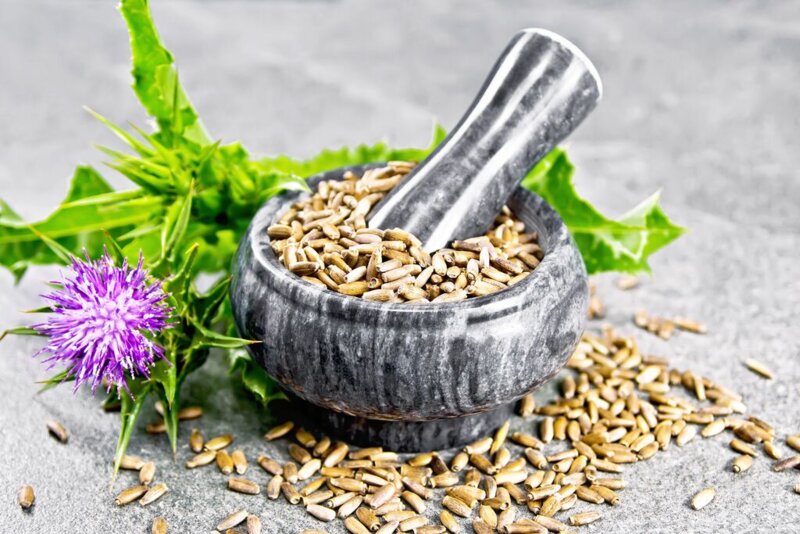- Protein
- Calcium
- Magnesium
- Zinc
- Iron
Growing children – the importance of a balanced diet

A balanced diet is particularly important for children in order to optimally support their rapid growth and development. We show which nutrients play a special role in this and give practical tips on how to promote healthy eating habits.
Rapid growth and development
Children of school age face very special challenges: They have to fulfil the high demands of school and leisure time. At the same time, they grow and develop very quickly. From around the age of 4, children gain around 2 kg in muscle mass and 5 cm in length every year (1, 2). By the time they reach puberty, they have already reached almost 80% of their final height (1). Their brain is extremely active and works at full speed. Although it accounts for only 5 to 10% of the body weight, it requires about half of the total energy consumed by the body at rest (3).
Which nutrients are particularly important for children?
Children are not small adults. Their nutritional requirements differ considerably from those of adults. In relation to their body weight, for example, children need twice as many calories, three times as much iron and vitamin D and more than twice as much calcium and iodine as adults (1, 4).
The 10 most important nutrients for growing children are :
- Vitamin D
- Vitamin C
- Folic acid
- Vitamin A
- Iodine
What does a healthy diet for children look like? The 6 cornerstones.
So what does a healthy diet that provides all the important nutrients in sufficient quantities look like? The Swiss Society for Nutrition recommends a varied mixed diet for children (17). In principle, all foods are permitted. It depends on the quantity and frequency. The aim is to provide all the nutrients needed for healthy growth, development and performance (18). But how can this be achieved (17)?
1. Five portions daily
Vegetables and fruit should be on the menu most often. At least five portions a day - three portions of vegetables and two portions of fruit. The motto here is: the more colourful, the better.
A simple tip: The size of a child's hand can be used as a measure for a portion - what fits in one hand is a portion. The portion sizes given for the various food groups should be seen as a rough guide. The actual requirement depends on how big and active a child is.
2. Bread, cereals and side dishes – wholemeal whenever possible
The second most important food group in terms of quantity are potatoes, pulses and cereal products such as bread, pasta, rice and other cereal grains. They contain valuable carbohydrates that provide energy. You should eat 3 to 4 portions of these a day. Whenever possible, opt for wholemeal cereals, as they contain more vitamins and minerals and, above all, dietary fibre, which keeps you feeling full for longer.
3. Sufficient protein for growth
Milk and dairy products are valuable sources of protein and calcium and are therefore particularly important for children's diets. Children should eat two to three portions a day. In addition, one portion of meat, fish, egg, tofu, quorn, seitan or an additional portion of dairy products should be eaten per day as a further source of protein.
4. Little oil and grease
Oils and fats are important for the body. However, they are high in calories and should therefore be used sparingly. The quality of the oils is particularly important. Rapeseed oil is particularly suitable.
5. Sweets and snacks only from time to time
Children would prefer to eat sweets, biscuits, savoury snacks or sweet drinks every day. However, all these foods contain a lot of sugar, salt or fat, but almost no nutrients. They should therefore only be included in the diet once a day as a small portion.
6. Drinking is important
Tap water and still mineral water or unsweetened herbal and fruit teas are best for quenching thirst. As a guideline: about 1 litre per day for 6-12-year-old children.
Many children are undersupplied with nutrients
Children have their own preferences when it comes to food. Some don't want to eat vegetables at all or only accept a very limited selection of foods. Others are so-called "poor eaters" who only eat reluctantly and in small quantities. For example, two recent studies from Germany show that most children eat too little fruit, vegetables and foods rich in fibre such as wholemeal bread and potatoes (19). Instead, meat, sausages, sweets and savoury snacks are too often on the menu (19). As a result, the high nutritional requirements of many children cannot always be met. In particular, too little dietary fibre, iron and calcium, as well as vitamin B2, vitamin D and iodine are consumed (19, 20).
How can you make a healthy and varied diet appealing to children in order to meet their high nutritional requirements? (17)
- Awakening the joy of healthy eating: By shopping and cooking together, children discover the variety of foods and have a say in what is served on the table.
- Meals together: Shared meals with the family are important to encourage healthy eating habits.
- Be a role model: When parents eat healthily, children imitate them. This increases the likelihood that children will adopt healthy eating behaviour and continue to eat healthily as adults.
- No strict prohibitions: Sweets and fast food are also allowed from time to time, as they otherwise exert an even greater attraction.
- You eat with your eyes: Children are more willing to eat healthy foods if they are attractively presented on the plate, e.g. as funny vegetable faces or radishes in the shape of mice.
- Hide vegetables and fruit: Children are more likely to accept them in pureed form as a smoothie, creamy soup or as a rich vegetable sugo.
- Separate ingredients/components: Some children do not like mixed dishes such as stews or one-pot meals. For these children, it is worth trying to serve the ingredients separately on the plate.
- Accept when the child is full: Children have a natural sense of hunger and satiety and should be encouraged to listen to their feeling of fullness. The plate therefore does not have to be eaten empty.
- Food supplements: To cover the high nutritional requirements of children, it may be useful to temporarily give them a multivitamin drink. In addition to vitamins and minerals, this should also contain high-quality proteins for growth and dietary fibres for longer satiety.
Sources
(1) Swiss Society of Pediatrics. Wachstumskurven 2011. https://www.paediatrieschweiz.ch/unterlagen/wachstumskurven/ [abgerufen am 19.07.2024].
(2) Meinhardt U. Pubertät und Leistungssport. Pädiatrie 2016;5:21-24.
(3) Steiner P. Brain fuel utilization in the developing brain. Ann Nutr Metab 2019;75(suppl 1):8-18.
(4) Bundesamt für Lebensmittelsicherheit und Veterinärwesen: Schweizer Referenzwerte für die Nährstoffzufuhr; 2022. https://www.blv.admin.ch/blv/de/home/lebensmittel-und-ernaehrung/ernaehrung/empfehlungen-informationen/naehrstoffe/naehrstoffzufuhr-dynamische-tabelle.html.
(5) Deutsche Gesellschaft für Ernährung (DGE). Ausgewählte Fragen und Antworten zu Protein und unentbehrlichen Aminosäuren. Stand: Januar 2021. https://www.dge.de/gesunde-ernaehrung/faq/ausgewaehlte-fragen-und-antworten-zu-protein-und-unentbehrlichen-aminosaeuren/ [abgerufen am 22.07.2024].
(6) Deutsche Gesellschaft für Ernährung (DGE). Ausgewählte Fragen und Antworten zu Calcium. Zuletzt überarbeitet: 11.03.2024. https://www.dge.de/gesunde-ernaehrung/faq/calcium/ [abgerufen am 22.07.2024].
(7) Deutsche Gesellschaft für Ernährung (DGE). Ausgewählte Fragen und Antworten zu Magnesium. Stand: Januar 2022. https://www.dge.de/gesunde-ernaehrung/faq/ausgewaehlte-fragen-und-antworten-zu-magnesium/ [abgerufen am 22.07.2024].
(8) Deutsche Gesellschaft für Ernährung (DGE). Ausgewählte Fragen und Antworten zu Zink. Stand: Juli 2019. https://www.dge.de/gesunde-ernaehrung/faq/ausgewaehlte-fragen-und-antworten-zu-zink [abgerufen am 22.07.2024].
(9) Schweizerische Gesellschaft für Ernährung (SGE). Eisen. Stand 2023. https://www.sge-ssn.ch/bildung-und-schule/ernaehrung-im-unterricht/unterrichtsmaterial/ [abgerufen am 22.07.2024].
(10) Deutsche Gesellschaft für Ernährung (DGE). Ausgewählte Fragen und Antworten zu Eisen. Zuletzt aktualisiert am 11.03.2024. https://www.dge.de/gesunde-ernaehrung/faq/eisen/ [abgerufen am 23.07.2024].
(11) Schweizerische Gesellschaft für Ernährung (SGE). Jod. Stand 2022. https://www.sge-ssn.ch/bildung-und-schule/ernaehrung-im-unterricht/unterrichtsmaterial/ [abgerufen am 22.07.2024].
(12) Deutsche Gesellschaft für Ernährung (DGE). Referenzwertübersicht. Jod. https://www.dge.de/wissenschaft/referenzwerte/jod/ [abgerufen am 23.07.2024].
(13) Deutsche Gesellschaft für Ernährung (DGE). Referenzwertübersicht. Vitamin D. https://www.dge.de/wissenschaft/referenzwerte/vitamin-d/. [abgerufen am 23.07.2024].
(14) Schweizerische Gesellschaft für Ernährung (SGE). Vitamin C. Stand 2022. https://www.sge-ssn.ch/bildung-und-schule/ernaehrung-im-unterricht/unterrichtsmaterial/ [abgerufen am 22.07.2024].
(15) Deutsche Gesellschaft für Ernährung (DGE). Ausgewählte Fragen und Antworten zu Folat. Stand: Dezember 2018. https://www.dge.de/gesunde-ernaehrung/faq/folat/#c3120 [abgerufen am 22.07.2024].
(16) Deutsche Gesellschaft für Ernährung (DGE). Ausgewählte Fragen und Antworten zu Vitamin A. Stand: November 2020. https://www.dge.de/gesunde-ernaehrung/faq/ausgewaehlte-fragen-und-antworten-zu-vitamin-a/ [abgerufen am 22.07.2024].
(17) Schweizerische Gesellschaft für Ernährung (SGE). Ernährung von Kindern. Stand: Dezember 2019. https://www.sge-ssn.ch/bildung-und-schule/ernaehrung-im-unterricht/unterrichtsmaterial/ernaehrungsscheibe/ [abgerufen am 22.07.2024].
(18) Kersting M, Kalhoff H, Lücke T. Von Nährstoffen zu Lebensmitteln und Mahlzeiten: das Konzept der Optimierten Mischkost für Kinder und Jugendliche in Deutschland. Aktuel Ernahrungsmed 2017;42:304-15.
(19) Mensink GBM, Haftenberger M, Barbosa CL, et al. EsKiMo II- Die Ernährungsstudie als KiGGS-Modul, Robert-Koch-Institut, Berlin, 2020. https://edoc.rki.de/handle/176904/6887.2 [abgerufen am 23.07.2024].
(20) Alexy U, Fischer M, Weder S, et al. Vegetarische und vegane Ernährung bei Kindern und Jugendlichen in Deutschland- VeChi-Youth-Studie. https://vechi-youth-studie.de/ergebnisse/. Zuletzt aktualisiert am 17.02.2021. [abgerufen am 24.07.2024].
(21) Schweizerische Gesellschaft für Ernährung (SGE). SGE Info Flash Proteine. Stand Dezember 2023. https://www.sge-ssn.ch/media/ct_protected_attachments/5f948fc94deb47ada17dc685241861/SGE_InfoFlash_Proteine_DE.pdf [abgerufen am 2.09.2024].
(22) Schweizerische Gesellschaft für Ernährung (SGE). Info Flash Calcium. Stand: Dezember 2023. https://www.sge-ssn.ch/ich-und-du/download/merkblaetter-und-unterlagen/ [abgerufen am 2.09.2024].
(23) Schweizerische Gesellschaft für Ernährung (SGE). Zink. Stand 2022. https://www.sge-ssn.ch/bildung-und-schule/ernaehrung-im-unterricht/unterrichtsmaterial/ [abgerufen am 2.09.2024].










